When the Coronavirus situation got serious here in the Netherlands in mid-March, I went ahead and sewed some face masks for myself and my family. I’ve received a few questions about them so I wanted to dedicate a post to the what, how and why of DIY face masks.
The Dutch general public is historically unfamiliar with face masks. The safe use of face masks comes with a set of rules and guidelines that we haven’t been taught and most people aren’t aware of over here. We currently also have a shortage of medical face masks in the Netherlands. I’m sure everyone agrees that all medical-grade face masks should go to those who need them most, such as medical personnel and people in direct contact with the sick. That shortage, combined with the risks of unsafe mask use, means the Dutch people are discouraged from buying and wearing face masks by the government.
In some other countries however, the use of face masks in public is strongly encouraged or even mandatory. If you’re in one of those countries and you’re also experiencing medical mask shortages or they’re hard to come by for any reason, making your own cotton face mask may be a good option for you. Good news: they’re really easy to make, even for sewing beginners.
Please note that I’m not medically trained in any way, nor am I a professional in any field relevant to this topic; I try to provide accurate information to the best of my abilities but please keep this in mind :)
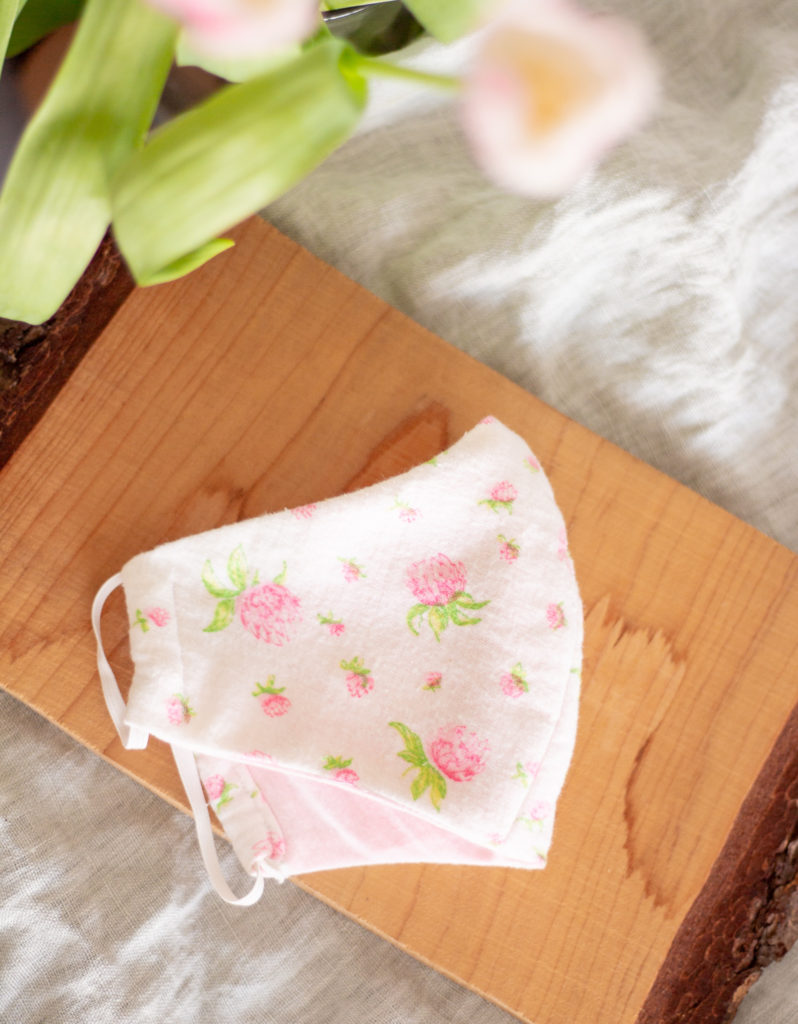
A Word Of Caution
A DIY face mask, or any non-medical grade face mask, can’t protect you from the coronavirus. The World Health Organisation states the following about how the virus spreads:
People can catch COVID-19 from others who have the virus. The disease can spread from person to person through small droplets from the nose or mouth which are spread when a person with COVID-19 coughs or exhales. These droplets land on objects and surfaces around the person. Other people then catch COVID-19 by touching these objects or surfaces, then touching their eyes, nose or mouth. People can also catch COVID-19 if they breathe in droplets from a person with COVID-19 who coughs out or exhales droplets. This is why it is important to stay more than 1 meter (3 feet) away from a person who is sick.
WHO.int, 07/04/2020
What a DIY face mask can do, is limit the amount of droplets you both breathe in, and spread. If you happen to be infected and asymptomatic, this will help protect other people you come into contact with.
A mask will also help prevent you from touching your face, if this is something you tend to do a lot (like I do, haha).
The most important things, whether you’re wearing a face mask or not, are to keep a safe distance from others, not touch your face and wash your hands frequently. Be sure to follow all your local government-imposed regulations regardless of any DIY protective gear you might be wearing.
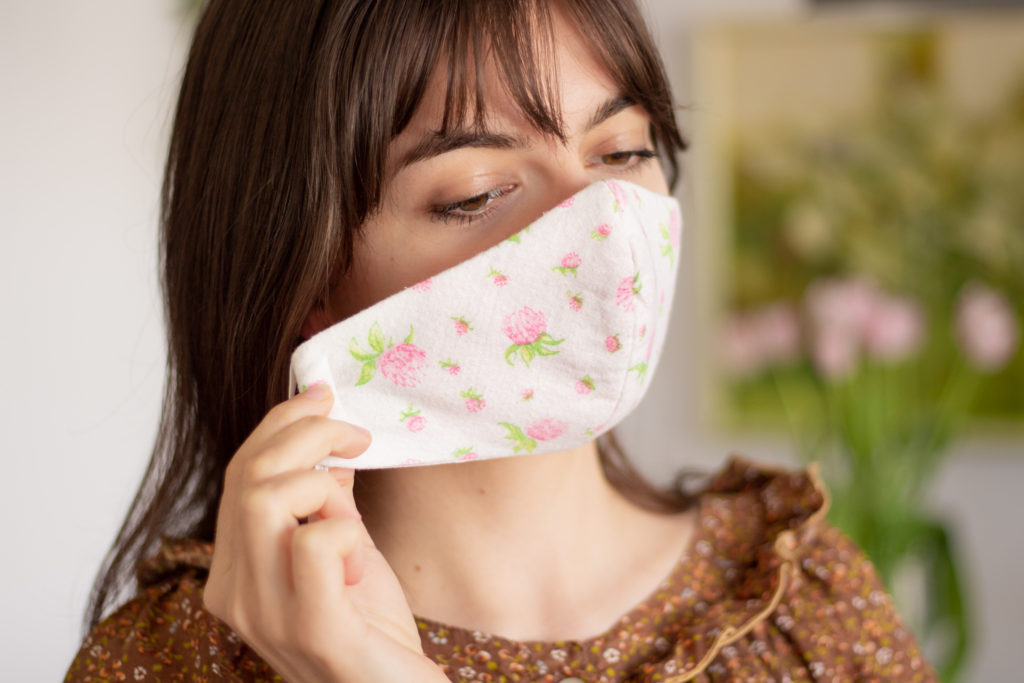
How To Use A Face Mask Safely
- Wash or sanitize your hands before putting on the face mask.
- Put the face mask over both your nose and mouth, and make sure there are no gaps between your face and the mask.
- Don’t touch the outside of the mask- if you do, wash or sanitize your hands immediately.
- Don’t wear your DIY mask for too long. Replace it when it gets damp.
- To remove your mask, take it off by the elastics. Don’t touch the outside and avoid touching the front on the inside of the mask. If you’re still out and about, place the mask in a single use plastic bag and tie the bag with a knot. Sanitize or wash your hands after.
- Sanitize the mask as soon as you take it off or as soon as you come home by washing it on a hot setting (min. 60 ° C), boiling, steaming or ironing it on a hot setting.
- If you used a plastic bag to store the used mask, throw away the bag and wash or sanitize your hands again.
- If you placed the mask on any surface before or during sanitizing, sanitize the surface with a disinfecting product or rubbing alcohol.
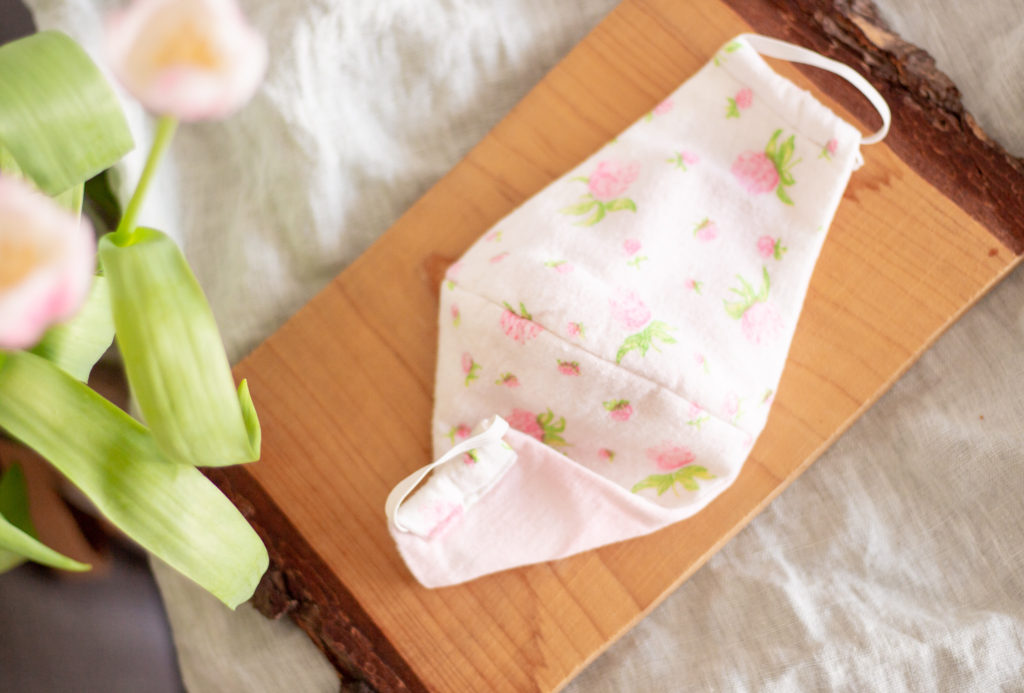
How To Make A Face Mask
There are hundreds, probably even thousands of mask tutorials out there at the moment and they’re very easy to find. I’m a visual learner so I used a video tutorial to guide me through the steps.
The tutorial I used won’t embed (I believe YouTube has a set of rules for Coronavirus-related videos), but you can find it on YouTube here.
This mask consists of three layers: two layers of cotton on the outside and one layer of felt in the middle. When picking out your cotton, make sure the fabric is woven rather than knitted, and woven as tightly as possible. You can tell how tightly your fabric is woven when you hold it agains the light- compare how large the gaps between the threads are in your different fabric options. Remember the goal here is to catch as many particles as possible behind the fabric.
Be sure to pre-shrink your fabric before you start, by washing it on a hot cycle or boiling it for 5 minutes.
The felt serves as an extra filter, as it’s non-woven. If you can’t get your hands on any felt or if you find it too difficult to breathe through, two or three layers of cotton as described above work as well.
The pattern I used, and that you can see in the video I linked above, is very similar to the one on this blog. There’s a printable image of the pattern there as well, if you don’t want to draft your own. However, I would advise you to draft your own pattern. I made a single layer mockup first to determine the size and shape I needed, before making the actual mask. A mask made to measure will fit better and you’ll reduce the chance of gaps forming between the mask and your face when you wear it. That’s also why I’d choose this shape of mask over the rectangular ones similar to surgical masks- those are more universal and not as snug as a made to measure one. If you do prefer that shape, there are lots of tutorials out there for those as well.
If you want to be extra dilligent, you can add a piece of wire in the part of the mask that goes over your nose. When you put on the mask, pinch the wire so that it forms around the bridge of your nose and the mask is nice and snug there. I use my glasses to hold down that part of the mask, as they sit in that area anyway.
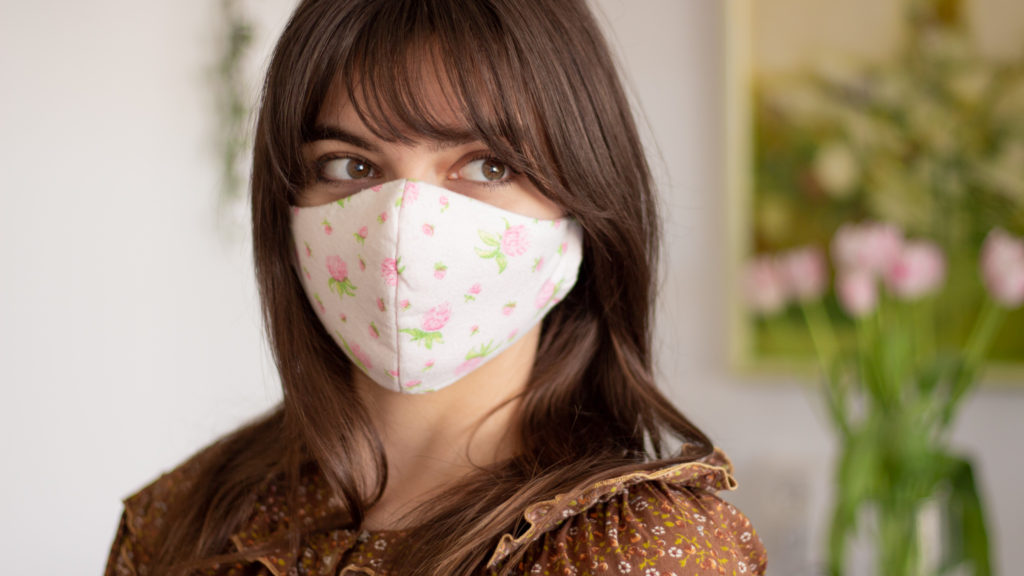
How I Use Mine
My face mask is an extra measure I like to take on top of all the regular guidelines. I stay home as much as possible and avoid any unnecessary in-person contact with others. I do go on daily walks, which is allowed here at the moment, but I only visit quiet areas at quiet times and keep my distance from others.
So far I’ve only used the face mask to go grocery shopping, which I try to do as little as possible. Even though my grocery store has taken measures to make shopping there safer, not all customers stick to the rules and it can be hard to keep a safe distance from everybody there. That’s when I like to wear the mask for extra protection. I also feel good knowing I run less of a risk of infecting the other customers in case I should happen to be infected and not know about it.
What’s the face mask situation like in your country? Do you wear one yourself?


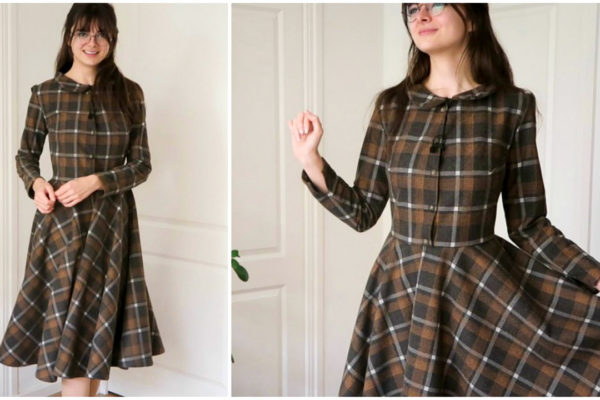



Hi, I’m also from Czech republic and I have started to sew for the first time ever to make face masks for me and my family. I actually enjoy sewing a lot :) So maybe something good can come from this awful situation… I recomend this video, that was made in Czech republic to share information and importance of face masks: https://youtu.be/HhNo_IOPOtU
Here in Czechia, we started movement “I wear mask for you, you were mask for me” and then the goverment even made them mandatory (but did not gave any to most ehm…). So most of us are wearing homemade mask like this.